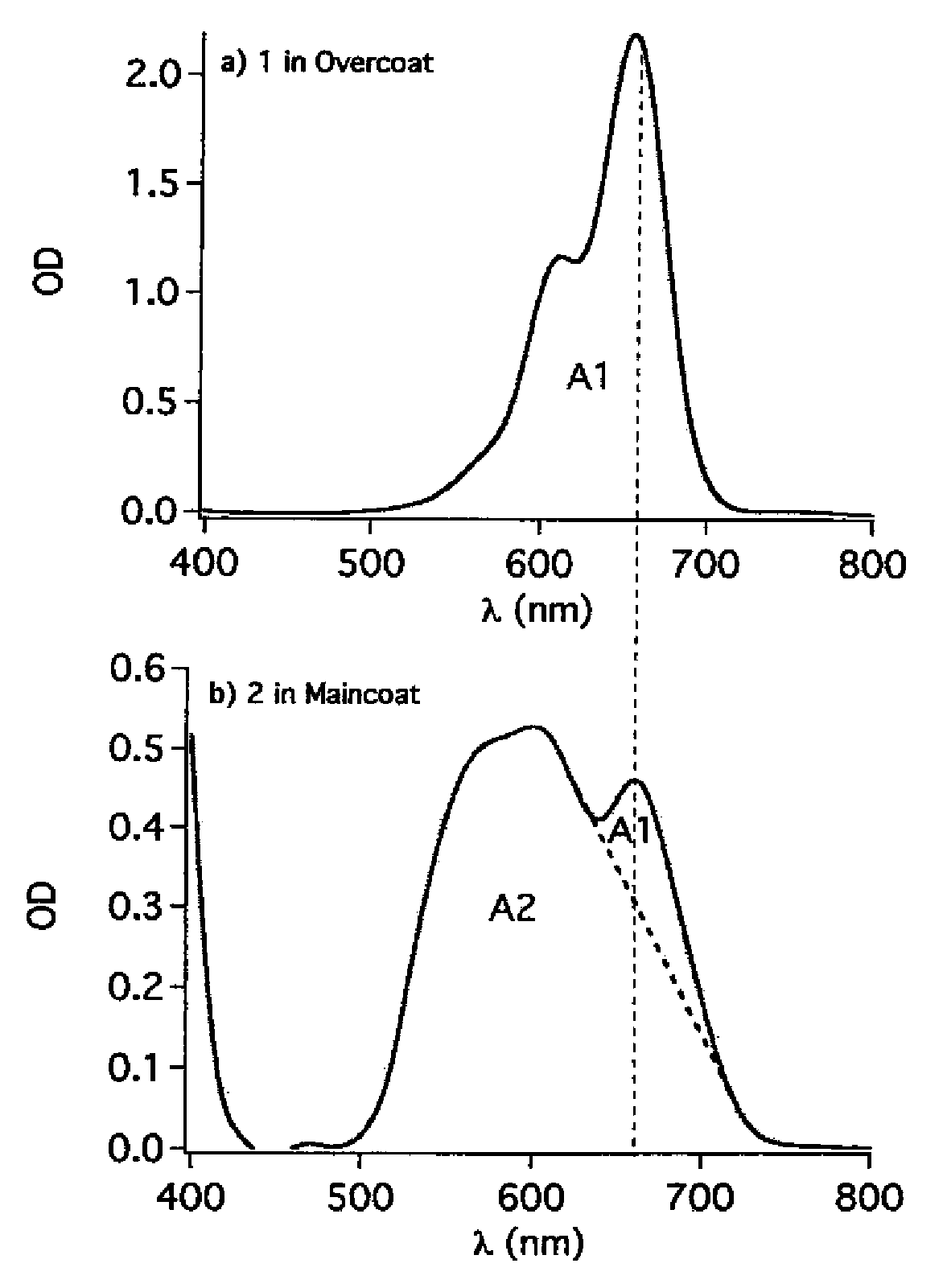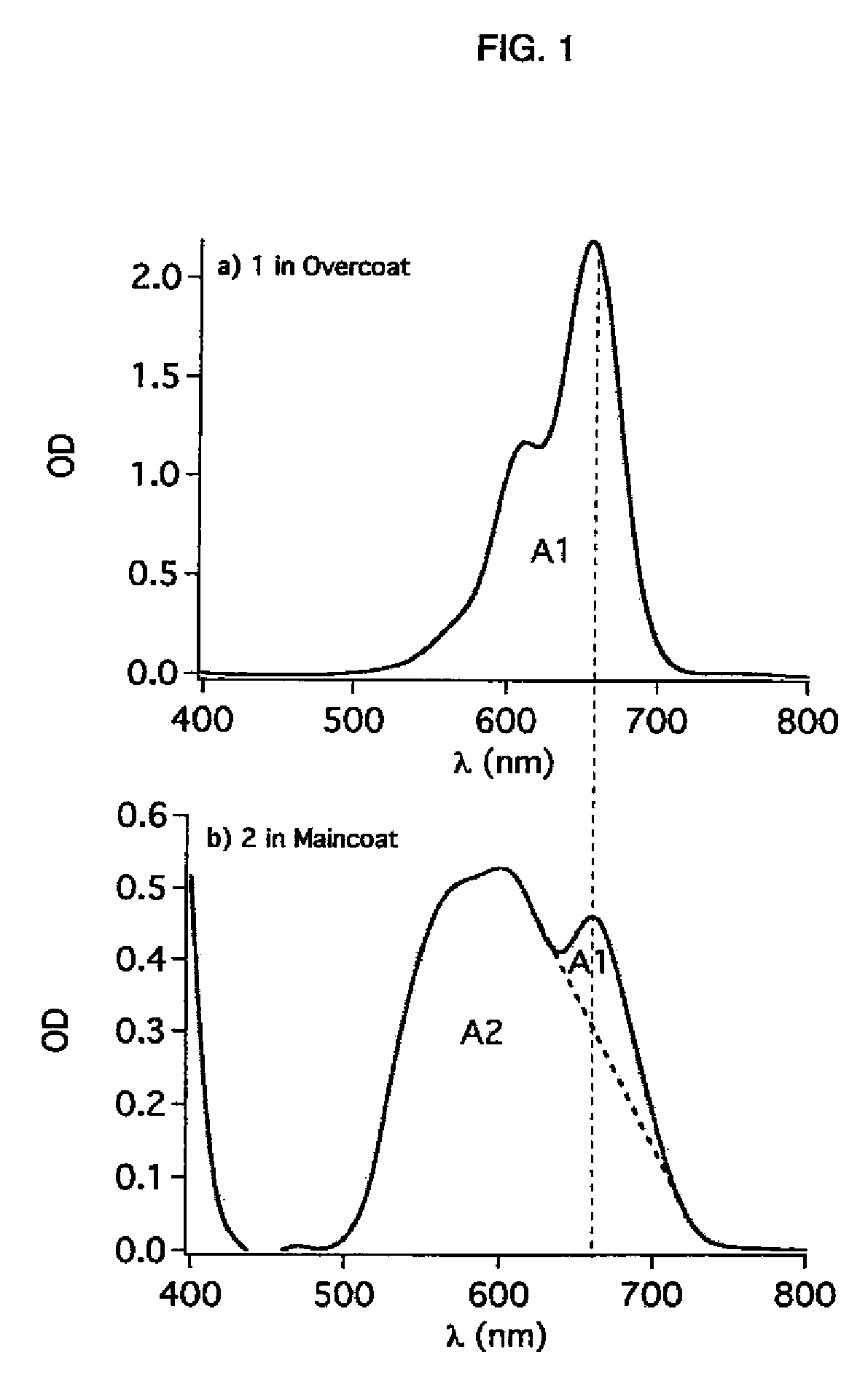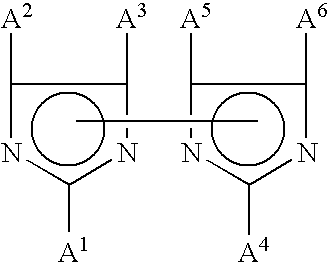Negative-working imageable elements
a technology of imageable elements and negative working, which is applied in the field of negative working imageable elements, can solve the problems of high processing load, unsatisfactory speed of such printing plates, and high processing load, and achieve the effects of convenient storage, convenient storage, and convenient storag
- Summary
- Abstract
- Description
- Claims
- Application Information
AI Technical Summary
Benefits of technology
Problems solved by technology
Method used
Image
Examples
examples
[0208]The following materials were used in the examples:
[0209]
Desmodur ® N100Trifunctional isocyanate (biuret of hexamethylenediisocyanate), available from Bayer (Germany)HEMA(2-Hydroxyethyl)methacrylateHEPi2-(2-Hydroxyethyl)-piperidineHMDIHexamethylene diisocyanateP1Copolymer derived from methyl methacrylate andmethacrylic acid at molar ratio of 87 / 13P2Terpolymer derived from 47% styrene, 34% methylmethacrylate, and 19% methacrylic acidP3Joncryl ® 683, acrylic resin from SC Johnson &Son Inc. (USA), acid number of 162 mg KOH / gKayamer PM-2Ester of 1 mol phosphoric acid and 1.5 molhydroxyethyl methacrylate, available from NipponKayaku (Japan)NK Ester BPE-500Ethoxylated bisphenol A having methacrylic endgroups available from Shin Nakamura (Japan)S12-Phenyl-4-(2-chlorophenyl)-5-(4-diethylaminophenyl)-oxazolePDISPPigment dispersion in propylene glycolmonomethyl ether containing 9 wt. % of copperphthalocyanine and 1 wt. % of a polyvinylacetalbinder containing 39.9 mol % vinyl alcohol, 1.2...
PUM
| Property | Measurement | Unit |
|---|---|---|
| pH | aaaaa | aaaaa |
| wavelength | aaaaa | aaaaa |
| wavelength | aaaaa | aaaaa |
Abstract
Description
Claims
Application Information
 Login to View More
Login to View More - R&D
- Intellectual Property
- Life Sciences
- Materials
- Tech Scout
- Unparalleled Data Quality
- Higher Quality Content
- 60% Fewer Hallucinations
Browse by: Latest US Patents, China's latest patents, Technical Efficacy Thesaurus, Application Domain, Technology Topic, Popular Technical Reports.
© 2025 PatSnap. All rights reserved.Legal|Privacy policy|Modern Slavery Act Transparency Statement|Sitemap|About US| Contact US: help@patsnap.com



